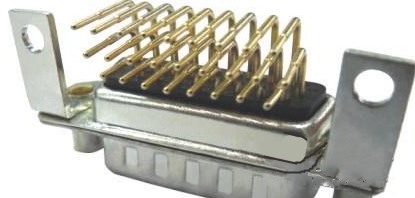Electrical connectors are key components in countless electronic devices because they enable and protect the transmission of electrical signals.They play a wide range of roles, from connecting key computer components to the cables in the cars we drive, and they serve different applications.Although some designs are simple, connectors are usually performed in complex electrical systems.Therefore, connectors must be durable, reliable, and easy to assemble and use.Although not all electrical connectors can withstand extreme environments, the extensive connector specifications ensure that the right type of application can be found for customized devices.
In many industries, the need to use the connector when the connector will be coated with a special coating, the connector used contact coating can not only reduce the environmental corrosion of the connector, but also improve the wear resistance and durability of the connector, it can also maintain the electrical performance of the connector impedance stability.Help to improve and use the quality effect of coated connectors.

The specific performance is as follows: 1, to the connector coating is helpful to improve the mechanical properties;2, the connector coating can improve the anti-corrosion function;3, the connector coating is helpful to improve the electrical performance;4, connector coating and the use of ordinary metal coating features;5, connector coating and the use of precious metal coating characteristics.
Electronic connector products in many applications, electronic connectors are connected to the printed circuit board while other components are installed, which means that the connector must be able to withstand the chemical processes and temperatures involved in the connection process.Introducing resistant materials to make connectors compatible with the assembly process increases the cost of the connector system and must be balanced against packaging density requirements.

Electronic connector products can be applied to connector systems in a variety of industries, and an effective connector system should provide a sufficient level of contact force, maintain an airtight connection at the contact interface, and help replace particles and oxides during mating cycles.In addition, the degree of relative slip between mating pairs should normally be such that the particles are moved to one side to expose the metallurgy at the contact interface.The balance between contact force and sliding action may have a significant impact on the reliability and cost of the connector system, while the number of contact interfaces may affect time and the rate of plug related faults. Increasing the number of contacts or using multi-faceted mating contacts can reduce the risk of failure.Although it may interfere with signal capability, the tight ratio of ground to signal contacts can further improve the reliability of electronic connectors.
The d-series connectors have been widely used for many years, initially developed in Cannon in 1952, and are now part of CanT.The d-connector has been used as a multiplexer in many applications, but it is probably best known as a connector for rs-232 serial links.In fact, the d-connector has been used for serial links on most computers for many years, and it is still possible to find d-connectors of various types on most computers today.
The d-type connector was originally referred to as the subminiature connector and is now commonly referred to as the d-type subminiature connector.Although these connectors were very small when they were first introduced, after so many years of development in the connector industry, many kinds of precision connector products have been developed and designed in the world, so the d-type connector is no longer considered as a true subminiature connector.

A d-connector usually consists of two, sometimes more, parallel connection rows.Connectors have a d-form metal housing, which not only provides mechanical strength for the connector, but also provides some limited screening by the metal housing contact of the plug and socket.In addition, the panel mounting connector is usually secured to the panel by a nut with additional threads that allow mating connectors to be secured to the panel to prevent loosening.
In addition, the free connector may have a rear housing that provides shielding and may be connected to a cable screen.Or if it's plastic, they can provide protection and also provide strain elimination on the cable.As expected, the connector containing pins is a male d-type connector and the connector containing socket pins is a female connector.The original d-type connector had two rows on the pins, and the total number of pins was an odd number, which led to the connector having a pin in another line, thus producing an e-d shape, which also prevented the direction of the matching mechanism of the connector from being incorrect.

 Inglês
Inglês  Chinês
Chinês  Alemão
Alemão  Coreano
Coreano  Japonês
Japonês  Farsi
Farsi  Portuguese
Portuguese  Russian
Russian  Espanhol
Espanhol 





